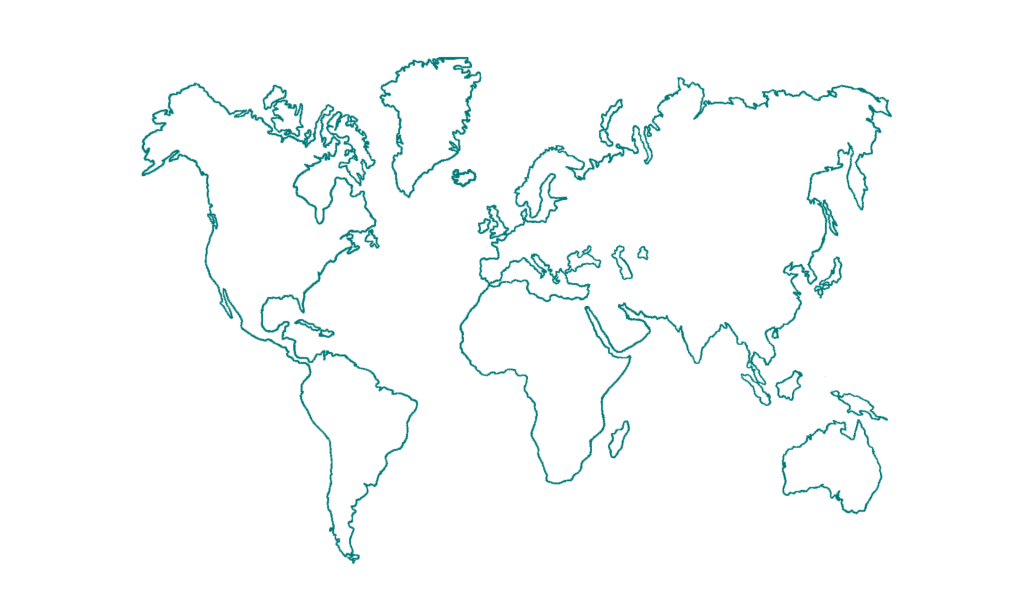Regulation (EU) No 909/2014 of the European Parliament and of the Council of July 23, 2014 on improving securities settlement in the European Union and on central securities depositories (CSDR) is a key element of the extensive European regulatory framework, with the aim of improving and promoting the security, efficiency and competitiveness of European Union (EU) financial markets.
The main purpose of the CSDR is to harmonize the settlement of financial instruments in Europe and to provide a set of common organizational and conduct requirements for CSDs operating the securities settlement systems (SSSs) creating, for the first time at a European level, a common regulatory framework for CSDs.

CSDR Level 1 corresponds to the main regulation and its Annexes and was published in the Official Journal of the EU on 28 August 2014 and entered into force on 17 September 2014.
CSDR is divided into three main areas:
Securities Settlement
Central Securities Depositories
Provision of Banking-type ancillary services to CSD Participants
CSDR Level 2 measures correspond to the Regulatory Technical Standards (RTS) and Implementing Technical Standards (ITS) that were developed by the European Securities and Markets Authority (ESMA) and European Banking Authority (EBA).
Securities settlement systems managed by CSDs play a key role in the settlement process as well as in the correct functioning of securities markets.
The increasing number of link agreements between CSDs have dictated a significant increase in cross-border settlements. The adoption, in Europe, of a set of harmonized measures for settlement and related institutions has become crucial as a way to reduce distinction between national and international securities transactions.


The creation of a single regulation, which minimizes the regulatory complexity faced by market players and CSDs, due to the existence of different national rules, will increase the efficiency and security of settlement in the EU by adopting obligations, recommendations, requirements and rules, directly applicable.
CSDR follows the purposes of other European Union regulations for financial markets and places particular emphasis on the harmonization, efficiency and safety of financial markets with the aim of keeping them safe and globally competitive.
- Main objectives
Promote and enhance security and efficiency of securities settlement, with particular reference to cross-border settlement, by establishing uniform obligations on market participants regarding settlement cycle and settlement discipline;
Provide a set of common requirements for the organization and conduct of CSDs operating securities settlement systems across the EU.
CSDR applies to all CSDs in EU and introduces some measures which directly impacts Participants (CSD clients).



- New definition of CSD
CSDs are organizations of enormous systemic relevance which protect financial markets and ensure the integrity of securities issues. It is essential to ensure their safety and reliability as institutions responsible for the management of securities settlement systems, centralized securities systems and securities initial registration.
The definition of CSD is now defined in a functional way, by reference to certain core services.
In order to be qualified as a Central Securities Depository, the CSD must provide at least two core services, one of which must be the settlement service.


CSD Core Services:
Annex to CSDR – Section A
Notary service:
Initial recording of securities in a book-entry system
Central maintenance service:
Providing and maintaining securities accounts at the top tier level
Settlement service:
Operating a securities settlement system
Non-banking-type ancillary services of CSDs:
Annex to CSDR – Section B
Services related to the settlement service:
Ex: securities lending mechanism, collateral management services, settlement matching, instruction routing, trade verification and confirmation
Services related to the notary and central maintenance services:
Ex: corporate actions, services related to shareholders’ registers, allocation and management of ISIN codes and similar codes
Establishing CSD links and other ancillary services:
Ex: providing, maintaining or operating securities accounts in relation to the settlement service
- Requirements applicable to CSDs
Uniform rules will be applied to CSDs to ensure their safety and reliability as institutions responsible for the management of securities settlement systems:
- Corporate governance rules;
- Record keeping;
- Rules and procedures to ensure the integrity of securities issues and reduce the risk associated with custody and settlement – reconciliation measures;
- Protection of securities of participants and those of their clients – account segregation;
- Subcontracting of services and / or activities;
- Transparency regarding the services provided;
- Requirements for participation in the securities settlement system;
- Prudential and capital requirements;
- Rules applicable to links between CSDs.

- Autorization, supervision and passport for CSDs
CSDs are subject to authorization and supervision by their competent authorities.
CSDs authorized in one Member State will be recognized throughout the EU for direct service provision or through a branch in another Member State.
CSD Regulation also includes a set of measures that aims to harmonize certain practices in the EU related to securities immobilisation / dematerialisation and settlement discipline, so that the settlement process as well as the custody become more secure and efficient.
Participants in settlement systems will be subject to direct impacts (resulting from the harmonization measures imposed) and indirect impacts (through the requirements imposed on the CSDs, by the regulation).

Mandatory dematerialisation and immobilisation
CSDR, Article 3
Internalised settlement
CSDR, Article 9 and
Commission Delegated Regulation (EU) 2017/391 and Commission Implementing Regulation (EU) 2017/393
Integrity of the issue
CSDR, Article 37
Settlement discipline – Cash penalties and buy-in
CSDR, Articles 6 to 8
Protection of securities of participants and those of their clients (account segregation)
CSDR, Article 38
Mandatory use of the LEI code (Legal Entity Identifier)
Commission Implementing Regulation (EU) 2017/394

- Mandatory dematerialisation and immobilisation
- Settlement discipline
- Internalised settlement
- Integrity of the issue
- Account Segregation
- Mandatory use of the LEI code
CSDR, Article 3
Transactions of securities through a trading platform presupposes their prior registration in book-entry form, through their immobilisation or direct issuance in a dematerialised form, in a centralized securities system managed by a CSD.

Book-entry form requirement for securities increases the efficiency of settlement and reduces costs since the management of securities in certificate form is more onerous and involves greater risks.
It also guarantees the integrity of securities issues and promotes:
Security for holders – minimizes the risk and the possibility of fraud;
Security for the EEs – allows the reconciliation between the amounts issued and the quantity in circulation.
The Portuguese law is, in relation to this requirement, in accordance with the CSD Regulation (see Securities Code).
CSDR, Articles 6 to 8
The settlement discipline regime is a key feature of the CSD Regulation which purpose is to promote the operational efficiency of CSDs and thereby contribute to timely settlement within the EU.

The regime introduces a set of rules to encourage settlement of transactions in the intended settlement date and requires CSDs to take measures to prevent and address settlement fails by introducing cash penalties and a buy-in / cash compensation mechanism.
CSDR, Article 9
Commission Delegated Regulation (EU) 2017/391
Commission Implementing Regulation (EU) 2017/393
In order to provide reliable data on the scale of securities settlement outside settlement systems and to ensure that the risks arising can be monitored and addressed, any institutions other than CSDs that settle securities transactions outside of a securities settlement system should report their settlement activities to the competent authorities concerned.
The competent authorities should subsequently transmit this information to ESMA and should inform ESMA of any potential risks resulting from such settlement activities.
In addition, ESMA should monitor such settlement activities and take into account potential risks that they might create.
CSDR, Article 37
CSD shall take appropriate reconciliation measures to verify the integrity of the issues. Such reconciliation measures shall be conducted at least daily.

Participants will have to reconcile their records with the information received from CSDs on a daily basis and will have to provide CSDs, if and when necessary, with all the information deemed necessary to ensure the integrity of the issues and to resolve any breaks of reconciliation.
CSDR, Article 38
CSDs must maintain records and accounts that allow:
To segregate in the accounts with the CSD, the securities of a Participant from those of any other Participant and, if applicable, from the CSD’s own assets.
Any Participant to segregate the securities of the Participant from those of the Participant’s clients.
Any Participant to hold in one securities account the securities that belong to different clients of that Participant (‘omnibus client segregation’).
A Participant to segregate the securities of any of the Participant’s clients, if and as required by the Participant (‘individual client segregation’).

Participants must also give their clients at least the possibility to choose between omnibus client segregation and individual client segregation, and inform them of the costs and risks associated to each option.
Commission Implementing Regulation (EU) 2017/394

CSD participants, including issuers, will have to disclose to their CSDs the LEI codes that identify their legal entities.
CSDs will record and report the LEI codes of their participants to their National Competent Authority.

CSD Regulation objectives are consistent and complementary with those of the T2S – TARGET2-Securities platform as they are intended to harmonize the legal aspects of securities settlement and the rules for CSDs at EU level, allowing T2S to achieve its objectives more effectively.
The main impacts of the CSD Regulation on T2S – TARGET2-Securities are related to the following matters:
Record keeping
Settlement discipline
CSDR is complementary to other regulations of the EU financial markets, namely:
- Directive 2014/65/EU of the European Parliament and of the Council of 15 May 2014 on markets in financial instruments;
- Regulation (EU) No 648/2012 of the European Parliament and of the Council of 4 July 2012 on OTC derivatives, central counterparties and trade repositories, commonly known as EMIR (European Market Infrastructure Regulation).

The Regulation also follows the principles developed by the following institutions, with primary objective to ensure the reliability of infrastructures that support the global financial markets.
Committee on Payment and Settlement Systems (CPSS)
International Organization of Securities Commissions (IOSCO)
European Securities and Markets Authority (ESMA):
ESMA, as a body with highly specialised technical expertise regarding securities and securities markets, will play a key role in the implementation of the Regulation, ensuring uniform application of EU rules by the national competent authorities.
ESMA will also be responsible for developing Level 2 draft regulatory and implementing technical standards related to certain matters.
Portuguese Securities Market Commission (CMVM):
In accordance with the provisions of Article 11 (1) of the CSDR, CMVM is the competent authority in Portugal responsible for carrying out the duties under the CSDR for the authorisation and supervision of INTERBOLSA.
Link.

